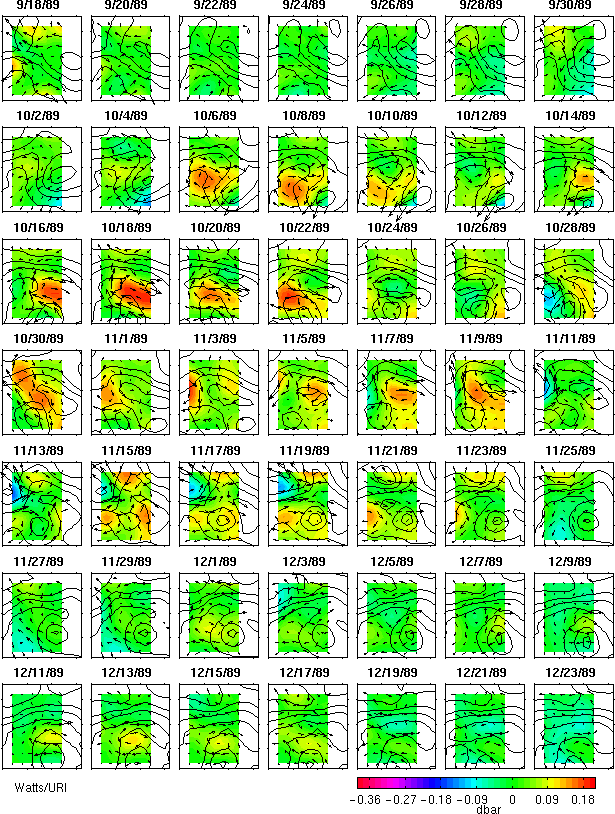TRW Events
Following the WCR events, in mid-October a CCR was shed to the south. The ring translated quickly westward and re-attached to the Gulf Stream in late October. Subsequently, the CCR moved eastward while remaining attached to the jet. By late November the CCR once again separated. Topographic Rossby waves (TRWs) characterize the abyssal flow fields.
| What's Shown | Event Description | Event Animation |
Interestingly, during this period, there was no obvious relationship between the upper jet and the deep pressure and current fields. Instead, a set of weak-to-moderate high and low centers propagated quickly through the array. Propagation speeds of 20-30 km d-1 and periods of 10-15 days were estimated for these eddies, properties that are consistent with TRWs. Because these eddies appeared within the array at nearly the same time as the CCR initially separated from the Gulf Stream, it is possible that either (i) they originated somewhere to the east and were instrumental in initiating the pinching-off process or (ii) they were radiated by the ring formation process.



